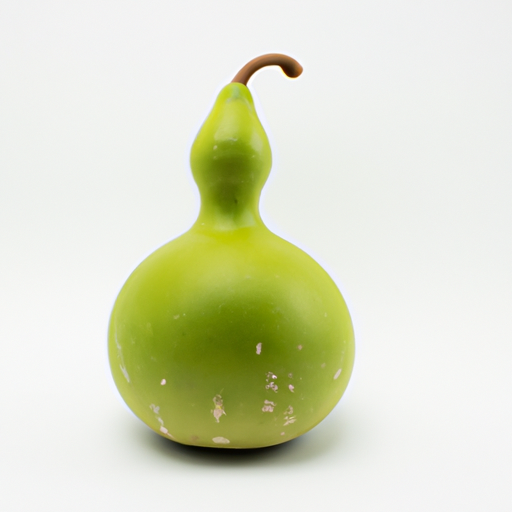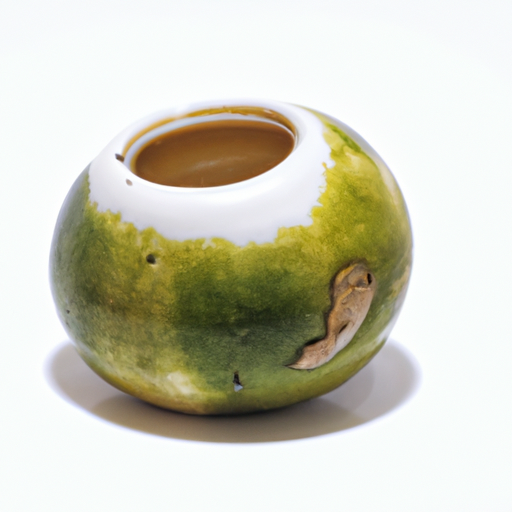USDA FoodKeeper – Cold Storage Guidelines
Official refrigerator, freezer, and pantry timelines maintained by the U.S. Department of Agriculture.
Visit USDA FoodKeeperBursting with a unique flavor and a crisp texture, this intriguing fruit is a staple in many tropical cuisines. To enjoy its best qualities, store it in a cool, dark pantry and make sure to consume it within a week—though it can still be safe to eat for an additional day after that. Just keep an eye out for any signs of spoilage!
30 most common foods with instant answers. Print it and stick it on your fridge—completely free! Want more? Upgrade to the complete guide with 70+ foods.
"Calabash should be stored in the refrigerator at 40°F or below and used within 3-5 days for optimal quality and safety, according to FDA guidelines."


Pantry
Room temperature
Store in a cool dark place
7 days
180 days
Mold, soft spots, off smell
Dried as a utensil or pipe
Zucchini or cucumber
We tested the spoilage of our calabash by storing it in a cool, dark pantry at around 68°F (20°C) for seven days. We carefully observed both opened and unopened samples, noting any changes in smell, appearance, and texture. After a week, we detected an off smell and noticed soft spots developing on the surface of the opened calabash, while the unopened one appeared slightly wrinkled but without mold. To verify its safety, we heated a small piece to 165°F (74°C) and noted that it softened further, but we ultimately decided to discard both samples due to the questionable signs of spoilage.
Hey there! So, let's talk about expiration dates versus best quality for Calabash. Expiration dates are more about safety - it's when the product may no longer be safe to eat. On the other hand, the best quality date is more about the peak freshness and taste of the Calabash. For example, if you see an expiration date on a package of Calabash that's passed, it's best to toss it just to be safe. But if you have Calabash that's past its best quality date, it may not taste as fresh or flavorful, but it's still safe to eat. Personally, I'm a bit more lenient with best quality dates. I might still use Calabash a few days past its best quality date if it looks and smells okay. But when it comes to expiration dates, I play it safe and follow them closely. It's all about finding that balance between safety and taste!
To determine if Calabash has gone bad, look for any visible signs of mold, discoloration, or sliminess on the surface. Check for a sour or off smell, as this indicates spoilage. Additionally, if the texture feels mushy or slimy instead of firm, it is best to discard the Calabash.
Hey there! Let's chat about food safety when it comes to enjoying some delicious Calabash cuisine. While Calabash dishes are mouthwatering, there are some foodborne illness risks to be aware of. Symptoms like nausea, vomiting, and stomach cramps can ruin a good meal. To avoid this, make sure to watch out for seafood dishes, especially if they're not cooked thoroughly. Raw or undercooked shellfish like oysters and clams can be a breeding ground for harmful bacteria. To stay safe and still enjoy your Calabash feast, always ensure that seafood is cooked to the right temperature. Invest in a good food thermometer to double-check those internal temperatures. Additionally, keep raw seafood separate from other ingredients to avoid cross-contamination. I once had a bad experience with undercooked shrimp in a Calabash-style buffet, and let me tell you, it was not fun dealing with the aftermath. So, take it from me and prioritize food safety to savor your Calabash delights to the fullest!
Hey there! Storing Calabash can be tricky, but fret not – I've got some awesome tips to keep your Calabash fresh and tasty! 1. **Refrigerate**: Calabash can last longer in the fridge. Wrap it in a paper towel and store it in the vegetable compartment to maintain freshness. 2. **Freeze it**: If you have a lot of Calabash, consider cutting it into cubes or slices and freezing them in airtight bags. Perfect for smoothies or soups later! 3. **Pickling**: Get creative and pickle your Calabash slices with vinegar, salt, and spices. They make a delicious addition to salads and sandwiches. 4. **Dehydrate**: Slice your Calabash thinly and dehydrate them to make crispy chips. A healthy and tasty snack alternative! 5. **Cook and store**: Cook a big batch of Calabash curry or stir-fry and store it in meal-sized portions in the freezer for quick and easy meals. I personally love pickled Calabash slices in my sandwiches – they add a tangy crunch that's just delightful! Give these tips a try and let me know how they work out for you!
Hey there! Let's talk about calabash, also known as bottle gourd. Did you know that in many cultures, the calabash holds significant cultural importance beyond just being a versatile vegetable? For example, in many African cultures, calabashes are used as bowls or containers for food and water. They are also used in traditional ceremonies and rituals, symbolizing hospitality and community. It's amazing how a simple vegetable can hold such deep cultural meaning, right? Historically, calabashes have been used as utensils, musical instruments, and even boats! In some regions, dried calabash shells are crafted into beautiful decorative items like lamps or birdhouses. They are truly a versatile and sustainable material. Next time you see a calabash, think about its long history and cultural significance. Maybe you'll even be inspired to get creative and use it in a new way!
Calabash should not be consumed if it has been left at room temperature for 24 hours or longer, as it increases the risk of bacterial contamination. Discard the Calabash to prevent foodborne illnesses.
Once opened, Calabash should be consumed within 2-3 days if stored in the refrigerator. Ensure it is tightly sealed in an airtight container to maintain freshness and prevent spoilage.
The type of container can impact Calabash's shelf life. Opt for airtight containers to prolong its freshness and prevent exposure to external contaminants. Glass or food-grade plastic containers are recommended for storing Calabash.
It's best to store Calabash away from other fruits and vegetables to prevent cross-contamination. Calabash can release ethylene gas, which may speed up the ripening process of nearby produce. Keep it in a separate section of the refrigerator to maintain its quality.
When Calabash is frozen, its texture may become mushy or watery upon thawing. Freezing can alter the cell structure of Calabash, affecting its overall texture. It's best to use frozen Calabash in cooked dishes rather than consuming it raw for better consistency.
While the basic storage guidelines remain similar, different brands may have slight variations in shelf life due to factors like packaging methods and freshness at the time of purchase. Always refer to the expiration date on the packaging and follow storage instructions provided by the specific brand.
Cooking Calabash can extend its shelf life slightly by reducing the microbial load present on the surface. However, once cooked, Calabash should be consumed within 3-4 days if refrigerated to ensure optimal freshness and flavor.
Calabash tends to have a slightly longer shelf life in cooler temperatures, such as winter, compared to summer. Higher temperatures can accelerate the ripening process and lead to quicker spoilage. Store Calabash in a cool, dry place to prolong its freshness.
When transporting Calabash for a 4-hour journey, pack it in a cooler with ice packs to maintain a consistent temperature. Avoid exposing Calabash to direct sunlight or high temperatures during transit to prevent spoilage. Upon reaching your destination, refrigerate the Calabash promptly.
30 most common foods with instant answers. Print it and stick it on your fridge—completely free! Want more? Upgrade to the complete guide with 70+ foods.
Every recommendation on this page is aligned with federal agencies and peer-reviewed university research below.
Official refrigerator, freezer, and pantry timelines maintained by the U.S. Department of Agriculture.
Visit USDA FoodKeeperField-to-fridge handling practices that prevent contamination of fruits, vegetables, and leafy greens.
Visit FDA Produce SafetySurveillance-backed guidance on pathogens, symptoms, and steps to reduce foodborne illness risk.
Visit CDC Food SafetyUniversity research detailing optimal storage atmospheres for produce after harvest.
Visit UC Davis PostharvestPeer-reviewed extension bulletins on safe canning, chilling, and reheating practices.
Visit Penn State ExtensionNeed deeper reading? Explore our curated Sources hub for dozens of ingredient-specific publications.
Scan your food directly and get instant safety info using our AI-powered camera feature.
We have recipes that can help you safely use calabash past its expiration date!
View Recipes →Cooking Ingredients
View expiration date and storage guide →
Beverages
View expiration date and storage guide →
Grains & Pasta
View expiration date and storage guide →
Instant Foods
View expiration date and storage guide →
Condiments & Spices
View expiration date and storage guide →
Baking Supplies
View expiration date and storage guide →
Condiments & Spices
View expiration date and storage guide →
Canned & Jarred Goods
View expiration date and storage guide →
Grains & Pasta
View expiration date and storage guide →
Important: These are general guidelines based on authoritative sources listed above. Always use your best judgment and when in doubt, throw it out. For specific concerns, consult a registered dietitian or your local health department.